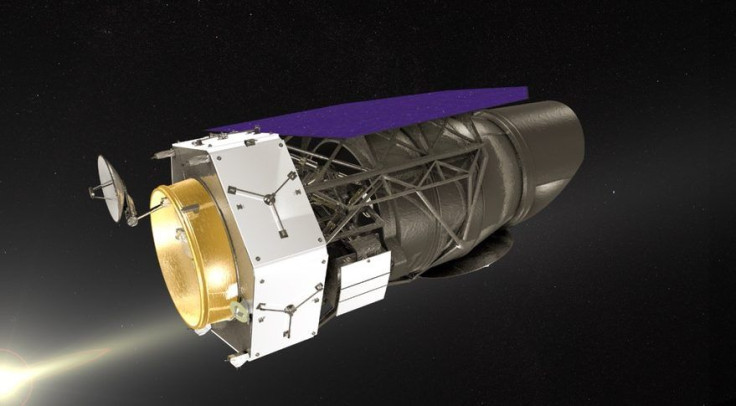NASA Memo Suggests Cost-Cutting In Design Of WFIRST Mission

NASA has suggested modifications to the design of the Wide Field Infrared Survey Telescope (WFIRST) mission are intended to reduce the spacecraft’s projected cost by at least $400 million.
The changes reflect some issues regarding the technical risk in some elements of the space observatory during the earliest phase of its development, a memo released by NASA said.
WFIRST is NASA’s next large space telescope under development, after the James Webb Space Telescope that is launching in 2018. NASA's proposed observatory will be specifically designed to research areas related to dark energy, exoplanets, and infrared astrophysics.
NASA Associate Administrator Thomas Zurbuchen said he was acting to make changes to the WFIRST program on recommendations derived from the WFIRST Independent External Technical/Management/Cost Review, or WIETR report. The changes are projected to affect the balance of future astrophysics missions NASA plans on undertaking.
The memo suggested a number of changes to the design of WFIRST, including cost reductions to both its main "widefield" instrument as well as a separate coronagraph instrument according to a report by Spacenews. The cost cuts are calculated to bring the mission’s estimated total cost down from $3.6 billion to of $3.2 billion which is a $400 million reduction.
"I am directing the Goddard Space Flight Center to study modifying the current WFIRST design, the design that was reviewed by the WIETR, to reduce cost and complexity sufficient to have a cost estimate consistent with the $3.2B cost target set at the beginning of Phase A,” Zurbuchen wrote in the memo.
The memo further asked the team to treat the coronagraph instrument as a "technology demonstration" instrument. The WIETR report said that incorporating the advanced instrument — which is designed to shield light from celestial bodies to make planet and debris disks detection better — is "certain to present risks to the primary mission."
WFIRST is considered a class B risk mission by NASA. This means that the mission is high priority but only medium to high cost and with a mid-range mission time. However, the investment involved matched that of a class A mission which is much more high risk and high reward, Zurbuchen wrote.
The memo also suggested several engineering developments based on the report. NASA was asked to add more spare hardware, as well as additional analysis, "to provide a more robust program."
A cost review will also be carried out to confirm that the revised WFIRST design fits into the $3.2 billion cost estimate.
The team was cleared to use the current 2.4m telescope architecture but this would change if the review showed that the cost demands weren’t met. "If the result of this study is the conclusion that WIFRST cannot be developed using the current 2.4m telescope architecture within the $3.2B cost target," Zurbuchen wrote in the memo, "I will direct a follow-on study of a WFIRST mission consistent with the architecture described by the Decadal Survey."
Zurbuchen and the two co-chairs of the WIETR panel, Orlando Figueroa and Peter Michelson, are scheduled to discuss the report at an Oct. 25 meeting of the Space Studies Board’s Committee on Astronomy and Astrophysics in Irvine, California.
© Copyright IBTimes 2024. All rights reserved.





















